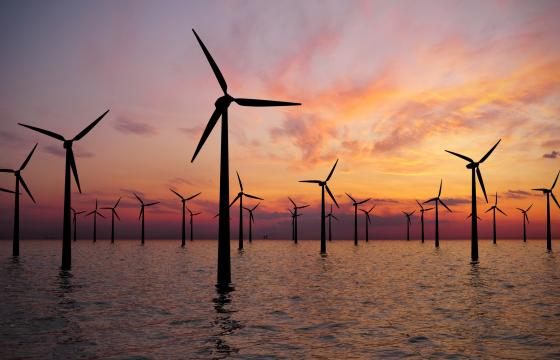How ACER contributes to key Green Deal energy files
How ACER contributes to key Green Deal energy files
Providing insights and advice on regulatory aspects

ACER (an EU Agency) is a valued partner to the EU Institutions providing data, insights and advice on the regulatory aspects of the Green Deal:
- Regulating hydrogen and power-to-gas in the context of the Commission's Hydrogen Strategy for a Climate-Neutral Europe and the Strategy for Energy System Integration.
- Revising TEN-E Regulation (a legislative Initiative on energy infrastructure).
- Offshore Renewable Energy Strategy.
Hydrogen and Power to Gas
ACER and CEER have developed a series of European Green Deal Regulatory White Papers to increase public understanding on key regulatory aspects and to assist the European Institutions as part of the preparations for legislation.
ACER-CEER "European Green Deal" Regulatory White Papers
How ACER contributes to key Green Deal energy files

TEN-E Regulation
The Trans European Network-Energy (TEN-E) Regulation is the EU framework for planning and supporting cross-border energy infrastructure.
The European Commission proposal (December 2020) on the TEN-E Regulation revisions seek to modernising the TEN-E framework, reflecting the Green Deal objectives and making it fit for the infrastructure needs of the sustainable energy system of the future.
As input to the European Commission's review of the TEN-E Regulation, in July 2019, regulators set out 18 recommendations on how to improve the TEN-E Regulation and energy infrastructure governance in the ACER-CEER Position Paper on Revision of the Trans-European Energy Networks Regulation (TEN-E) and Infrastructure Governance.
ACER and CEER see scope to further improve the Commission's proposals (December 2020).
Off-shore wind
The European Commission in its Offshore Renewable Energy Strategy has set a massive goal of increasing offshore wind capacity from 12 GW to 300WG in 2050.
It is important to facilitate the deployment of hybrid projects - combining power, storage and/or electrolysis - such as cross-border offshore windfarm projects (that also function as interconnectors) to enable the massive four-fold increase in offshore wind to 60 GW in 2030 and to 300GW by 2050.
A coordinated offshore strategy builds mutual reliance across EU Member States with cooperation needed on multiple aspects e.g. planning, governance, optimisation, plus potentially also proving an ill-fit over time with national energy or renewable strategies (risk of accounting or methodological rigour becoming aims 'in their own right').
Successfully scaling offshore is inextricably linked to Europe's infrastructure challenge and hence touches upon many elements of ACER's core work such as bidding zones, European infrastructure Projects of Common Interest (PCIs) and how to allocate costs (Cross-border cost allocation (CBCA).
This level of ramp up requires the right legal regulatory framework. ACER notes that the European Commission's TEN-E proposal excludes ACER from off-shore network development process. Furthermore, it detaches off-shore network development from on-shore (through separate network development plans, run in different cycle lengths).
Energy System Integration
The decarbonisation of the energy system requires an increasing level of integration between its various components.
Energy system integration refers to the planning and operation of the energy system as a whole - across multiple energy carriers (e.g. electricity, gas, heat), infrastructures, and consumption sectors (industry, buildings, transport) - by more strongly linking them with the objectives of decarbonisation, energy efficiency, affordability and reliability of the energy system.

